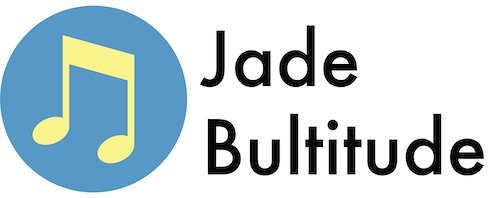In this article you’ll learn how to construct the C minor triad as well as how to play it on piano and guitar.
We’ve also included sections on inversions for those that want a deeper understanding. Lastly, listen to some examples of popular songs that featured this triad.
Root , 3rd and 5th
The C minor triad is formed of the 1st, flat 3rd and flat 5th of the C major scale.
- C – root note
- Eb – minor 3rd above the root
- G – perfect 5th above the root
Here is the triad written on the stave in the treble and bass clef.


Before you read on make sure that you have a basic understanding of intervals. Intervals are vital for understanding how triads are built. Check out our guide to major, minor and perfect intervals for more on this.
C Minor Triad on Piano
Below you can see how to play this triad on the keyboard or piano. This pattern of notes could also be played starting on any C note.
However, the order of the notes must be the same:
- C – lowest note
- E flat – middle note
- G – highest note
This is called ‘root position’.
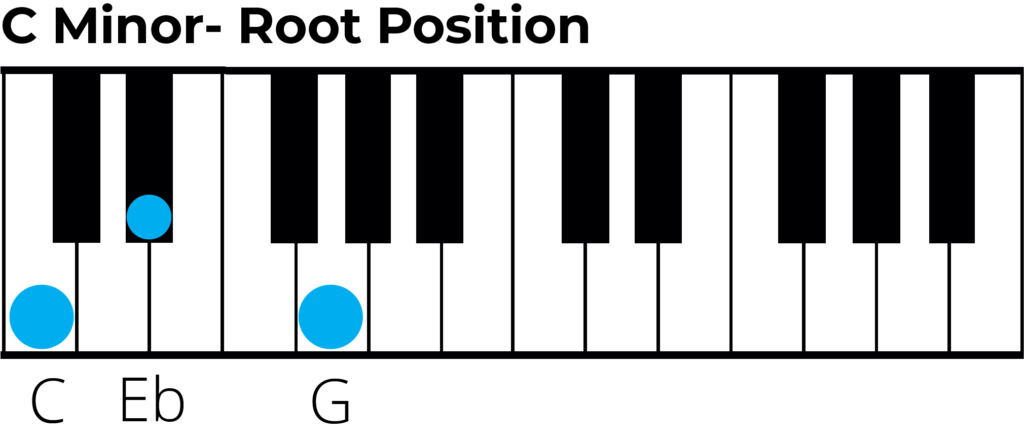
C Min Chord on Guitar
There are two simple positions that you can use to play a C minor chord on guitar. Both positions can also be slide up or down the neck to play different minor triads.
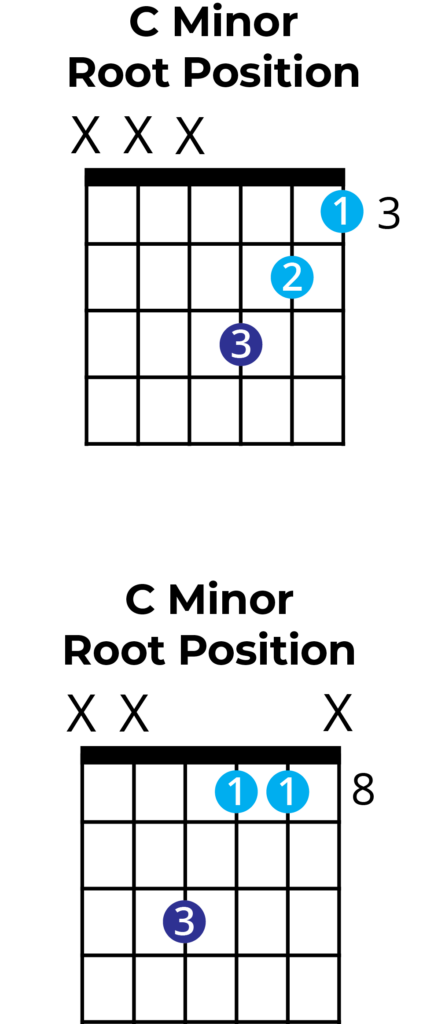
1st Inversion
A 1st inversion is where we take a triad but we start on the second note, which in this case is E flat. We still keep the G above, but then the C (or root) become the highest note.
This way of rearranging a triad gives us a different sound as the relative pitches of the three notes has changed.
- E flat – lowest note
- G – middle note
- C – highest note

1st inversion on Piano
On the piano we can play the 1st inversion of a C Minor chord by starting on an E flat. They play the G above and the C above this.
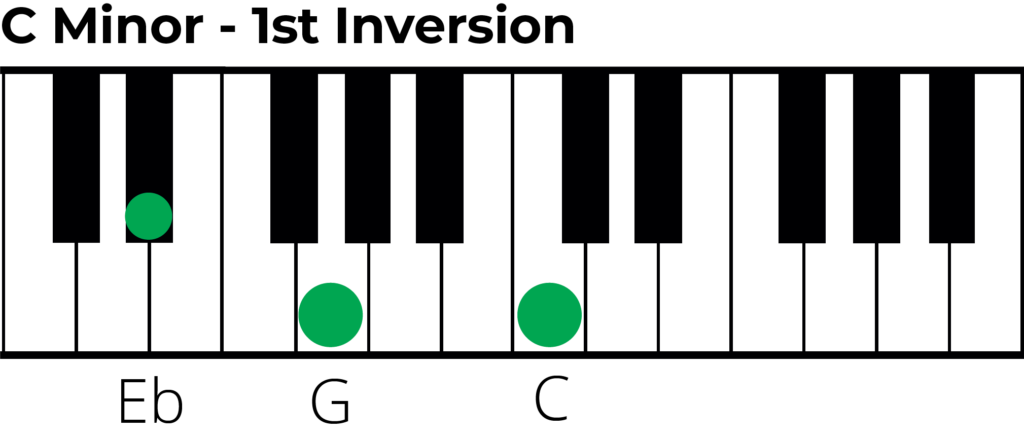
1st Inversion on Guitar
Below are the most common shapes for playing a C minor chord in the 1st inversion. Remember that we can only use certain shapes are the pitches of the three notes are important.
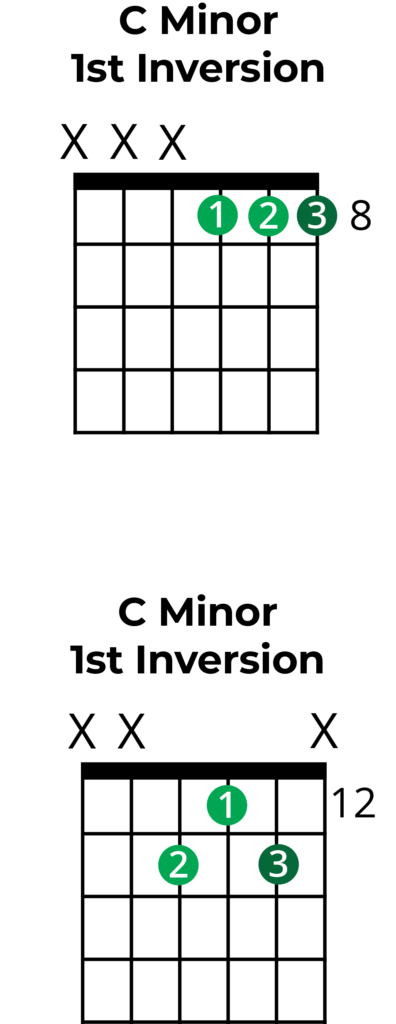
2nd Inversion
A 2nd inversion is where we take a triad but we start on the third note, which in this case is G natural. We still keep the C above this as we did from the 1st inversion. Then the Eb becomes the highest note in the chord.
- G – perfect 5th (lowest note)
- C – root note (middle note)
- Eb – minor 3rd (highest note)
We could construct a 2nd inversion starting on any G note in any octave. The only thing that must stay the same is that the we use the C above and the Eb above that.

2nd inversion on Piano
On the piano we can play the 2nd inversion of a C Minor chord by starting on a G natural. They play the C above and the Eb above this.
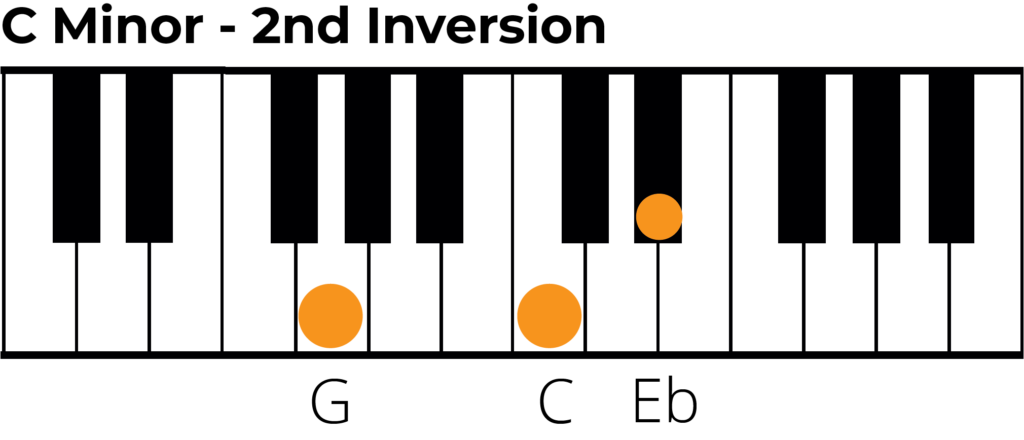
2nd Inversion of Guitar
Below are the most common shapes for playing a C minor chord in the 2nd inversion. Remember that we can only use certain shapes are the pitches of the three notes are important.
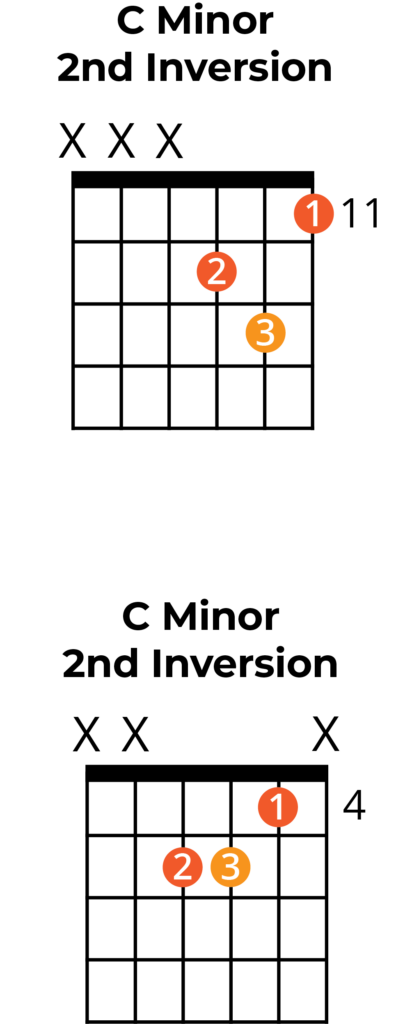
Triads from the C Minor Scale
By looking at the C Minor scale we can actually make triads built on each note and only using notes from C minor. Below you can see a list of each triad we will create be starting on different notes of the scale.
- C Minor
- D Diminished
- Eb Major
- F Minor
- G Minor
- A Major
- Bb major

Famous Songs in C Minor
Here’s 3 famous examples of songs in a C Minor key. For this reason, they use C Minor triads, as the root note chord, prominently in their chord progressions.
‘My heart Will go on’ – Celine Dion
Celine Dion’s “My Heart Will Go On” is a timeless ballad that became an instant classic due to its emotional resonance and powerful vocals.
‘Baby One More Time’ – Britney Spears
Britney Spears’ “Baby One More Time” is a pop sensation that catapulted her to stardom, known for its infectious melody and iconic music video.
‘He Won’t Go’ – Adele
Adele’s “He Won’t Go” is a soulful and heartfelt track that showcases the singer’s remarkable vocal talent and emotional depth. This song dives into themes of love and vulnerability.
What’s next….?
- Learn how to construct the C Major triad
- Swat up on your chord knowledge with our complete guide to chords.
